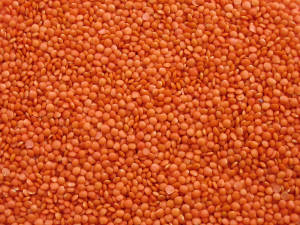Lentils are one of the oldest cultivated plants in the world. The ‘Len’ part of the word comes from the English ‘lens’, as when cut in half a lentil appears round and reflective.
Lentils can grow in any conditions other than frosty ones. They love plenty of sunlight and generally warm conditions. They require free-draining soil and prefer soil that is at the sandy or loamy end of the spectrum
Varieties of Lentil
There are a wide variety of lentils available today. They have all been selectively bred over millenia for size and color. There are minor differences between varieties but nothing to be overly concerned about for the gardener. The cook may prefer the smaller varieties as they are quicker to cook.
Planting Lentils
Grow lentils in a seedbed. Rake the surface prior to sowing. Plant in drills two inches (5cm) deep. Alternatively, lentils can be scattered over the soil, followed by the soil being raked over them lightly. Whichever method is used, seedlings will need to be thinned so that they are around one foot (30cm) apart.
Lentils can also be started in a seed tray or punnets if preferred. Use a seed raising mix. Harden off before transplanting when the soil is warm.
Growing Lentils
Hand weed regularly and water during drought. They are reasonably drought resistant. Be wary of not water-logging the soil, which is one of the few things that one can do wrong when growing lentils. Too much water can result in excessive growth of foliage.
Lentils can be grown in containers, as well. Sow in a container full of potting mix and moderate amounts of fertilizer as per the above instructions. If possible sow in a container/pot that can be moved outdoors once seeds have germinated.
Harvesting Lentils
Lentils are ready to eat after around 3 months. The pods will begin to yellow. If the pods start to split open while on the plant you have left it a touch late, so harvest immediately.
Harvest by uprooting the entire plant and leaving for one to two weeks in the sun to dry out. The pods will dry out and split open, allowing for easy access to the lentils. They can be removed and stored in a dry place for a number of years.
Threats to Lentils
Lentils are generally problem free. There are a few fungi and viruses that can affect the leaf and the stem. Keep an eye out for blackening or fuzziness around the stem or discoloration of the leaves.


